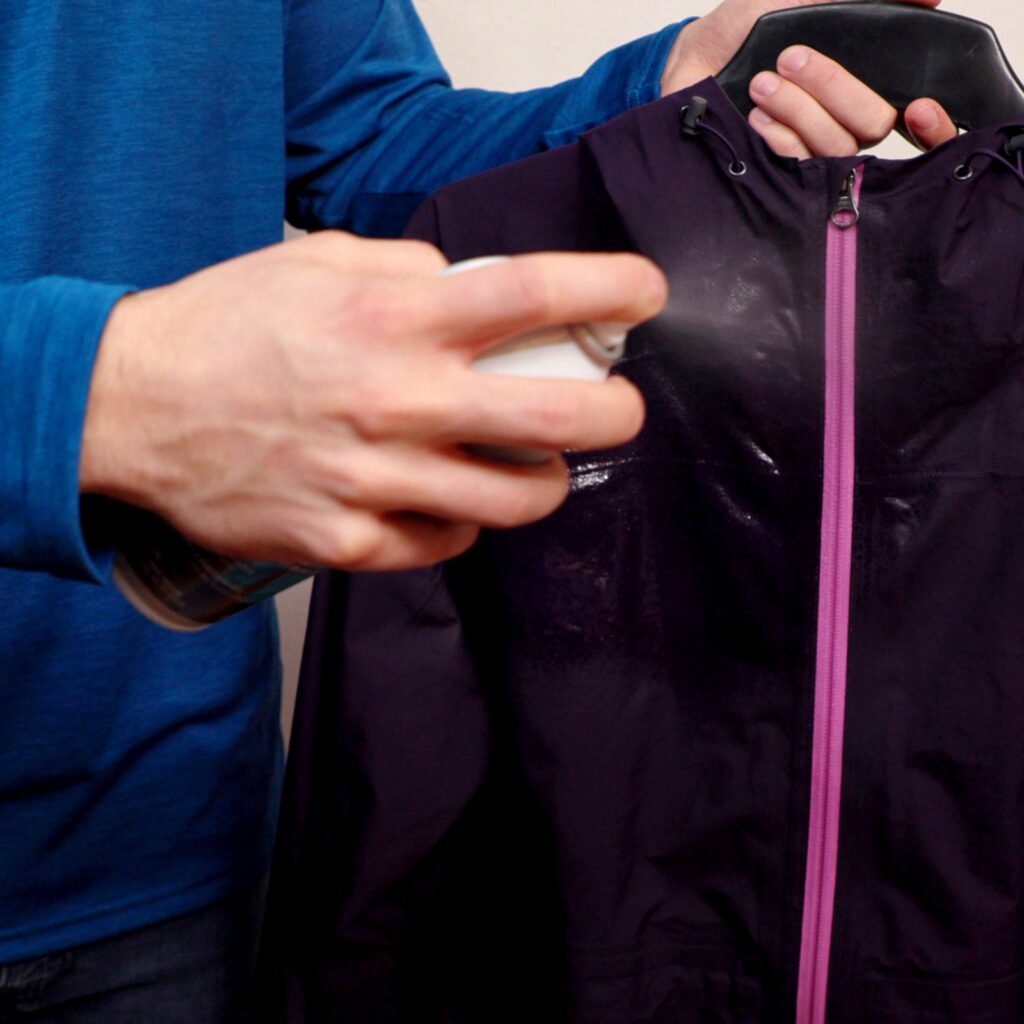How to Re-Waterproof Your Old Rain Jacket
All clothing loses its water resistance over time. Here’s how to get it back, so you don’t have to buy new…

Feel around on the inside of the fabric behind the dark patches. Does it feel wet? If it is (and you’re sure it’s not just sweat), it could be that water is soaking through and your jacket or pants need a new application of DWR.
A note about wetting out after heavy rain: Even new, hardshell jackets can wet out after prolonged, very heavy rain. So if you’re seeing dark, wet patches after a long time in a storm, it doesn’t necessarily mean you need a new coating of DWR. Do a little detective work to find out for sure. Once you take the clothing home and it has a chance to dry, squirt it with a spray bottle full of water to see if moisture beads up. If it wets out again, it’s time for more DWR.
Clean the Clothes First
Wash your garments before re-waterproofing them to remove body oils and old dirt. It’ll help the new DWR coating adhere better to the fabric. Buy a cleaning product made specifically for technical outdoor clothing, such as Nikwax Tech Wash, although you can instead use a small amount of regular laundry detergent.
You’ll want to wash these separately from your regular non-outdoor clothing. Afterward, you’re ready to apply the DWR treatment. You’ve got two options here: spray or wash-in.
How to Apply Spray-On DWR
For spray-on options, there’s Gear Aid ReviveX Spray, Grangers Performance Repel Plus Spray, and Nikwax TX.Direct Spray.
Whichever you choose, take it outside to apply it—it’s not good to breathe this stuff in. Just hang your garment on a hanger outdoors, zip up the front and close the pockets, and spray the exterior of the jacket or pants.
One spray can is enough to re-waterproof one outfit—meaning a jacket and pair of pants. In my experience, there’s just barely enough though, so don’t waste it by spraying any particular spot on your garments for too long. If you have any left over after you finish, apply it to areas that see lots of abrasion, such as shoulders, armpits, and the crotch/upper thigh area.
How to Apply Wash-In DWR
Typically, you’ll want to use DWR wash-in treatment in either a top or front-loading washing machine set to a warm-water, gentle cycle, but consult the bottle of the product you’re using. Your best options are Gear Aid ReviveX Wash-In, Grangers Repel Wash-In, and Nikwax TX.Direct Wash-In.
If you don’t have a washing machine handy, you can apply the product by hand with a sink or bucketful of warm water and some gloves. Some DWR treatments instruct you to follow up by tossing the garments into a dryer set to a low-heat cycle to seal in the coating. Just check instructions on the bottle of the stuff you’re using first.
How Long It’ll Last
Reapplications of DWR don’t last as long as the factory-applied treatment. There’s no way around it: You’ll just have to get used to checking your rain gear before trips and reapplying DWR as needed. High-impact areas, such as shoulders and armpits, are exposed to more abrasion, and these areas tend to lose their waterproof coating sooner than others.
DWR treatments, for a long time, used long-chain perfluorocarbons (PFCs) that created toxic byproducts during manufacturing and disseminated into the environment as the product wore down. The DWR treatments we recommend—ReviveX, Grangers, and Nikwax—use flourocarbon-free formulas. Though you may balk at the idea of introducing more synthetic chemicals to your gear, these treatments increase the life span of your clothes several times over, creating less waste over time.
The more you use the garment, the more quickly the DWR coating will wear off. But there’s no limit to how many times you can reapply DWR. As as long as the clothing is in good shape, you can keep re-waterproofing it over and over for years to come and save yourself from having to replace a several-hundred-dollar rain outfit.
More Great WIRED Stories





